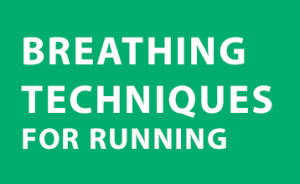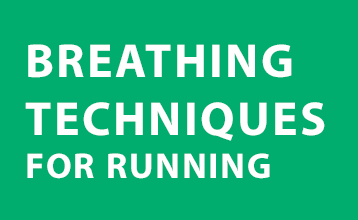 If you have been running for a while, you must have thought about breathing at some point.
If you have been running for a while, you must have thought about breathing at some point.
Are there any certain ways of breathing that can help a runner perform better?
Let’s find out…
In this article, we’ll discuss how to breathe properly while running and which breathing patterns you can try.
First, the most important thing:
Shallow Breathing vs. Deep Breathing
Many people breathe with their chest… without even noticing.
Chest breathing or shallow breathing is bad because it doesn’t allow you to take enough oxygen.
On the other hand, deep breathing or diaphragmatic breathing allows you to take the maximum amount of oxygen.
When you breathe this way, your belly expands when you inhale, and contracts when you exhale.
We should be breathing this way all the time, not just while running.
Breathing with Nose or Mouth?
Another question many people ask is:
“Should I breathe through my nose or mouth while running?”
While many people feel comfortable breathing with their nose, breathing with the mouth is better – simply because it allows you to take in more oxygen.
We need more oxygen while running than walking or resting. Our goal should be to take in as much as we can. Breathing with the mouth is preferred for that reason.
You might be fine while breathing through your nose on easy pace, but on faster paces, breathing through the mouth is much better.
So primarily you should be breathing with your mouth.
Related: How to Start Running
Breathing Rhythms
Now let’s talk about breathing rhythm.
Breathing rhythm is simply, how many steps you take when you inhale and how many steps when you exhale.
Breathing in a certain rhythm can help a runner big time.
Your breathing rhythm will depend on the intensity of your workout so it can also be used to monitor your effort level. We’ll discuss that later in this article.
Here are some breathing patterns that you can try:
3:3 Rhythm
Breath in while taking 3 steps and breath out while taking 3. You should be able to breathe in this pattern on your easy runs.
When you’ll be running on faster paces such as – tempo or interval; this rhythm might not be enough. You can try these:
2:2 Rhythm
In this pattern, you breathe in taking two steps and breathe out taking two. You can also breathe with this pattern on your easy runs to get used to it.
1:1 rhythm
A 1-1 rhythm can be used to get more air into your lungs quickly. However, it leads to very shallow breathing. A 1-1 rhythm can be used during the final minutes of a race.
Breathing in this pattern for more than a few minutes is not a good idea.
Uneven rhythms
You can also try uneven breathing rhythms such as – 3:2, 2:3 2:1, 1:2 etc.
For example, in a 3:2 pattern, you’ll inhale while taking three steps and exhale taking 2. And in a 2:3 pattern, you will inhale taking 2 steps and exhale taking 3.
Breathing and Side Stitches
Another time when knowledge of proper breathing techniques can be useful is when you get a side stitch (the pain you feel on the left or right side of your stomach while running). Side stitches are painful and they make a running session unenjoyable.
Shallow breathing is one of the causes for side stitches. So it can be eliminated by slower and deeper breathing. Try a deep breathing pattern (3-3) when you get a side stitch and see if it helps.
Breathing Rhythms and Intensity
Your breathing rhythm can also be a good predictor of the intensity of a run. So you can use it to adjust your pace.
For example, you should be comfortable with a 3-3 pattern on an easy run. If not, then it’s not an easy run. You should slow down until 3:3 rhythm becomes comfortable.
Of course, you might prefer a pattern you like such as 2-2 or 2-1 on an easy run, but you should be able to do a 3-3 rhythm comfortably.
You can also use breathing patterns in different ways. For example, during an easy run – you can start with a 3:3 rhythm and after a few minutes, switch to a 3:2 or a 2:2 rhythm.
Final thoughts
Like everything else in running, breathing pattern also varies from person to person. If a rhythm works for someone, it doesn’t mean it is the best and will work for everyone else.
The most important thing is to breathe deep and avoid shallow breathing.
Experiment with breathing patterns and choose what feels natural to you. Do not force yourself into a breathing rhythm. Doing so will make running even harder for you, which is exactly the opposite of what we want.
You may also like:

